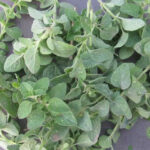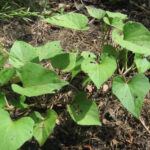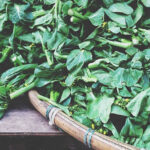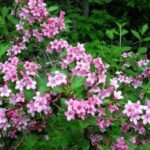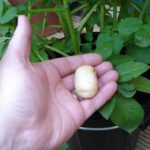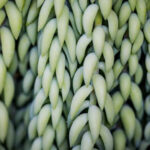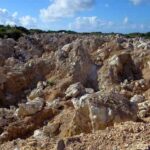The endive plant can be a little confusing. Several plants are referred to as ‘endive’ and some endive plants are mistaken for vegetables such as lettuce and other leafy greens, which have a milder flavor. Hopefully, this article will help explain the differences between the different types of endive and will give you some tips on how to grow the lettuce-type leaves you may recognize from supermarket salad bags.
The main types of endive to be discussed here are Bativan or escarole, an upright variety with a large salad-like broad leaves, and curly endive also called frisee with wide rosettes of finely serrated leaves. Both are very easy to grow and delicious to eat!
So why grow endive? Well, firstly it is low in calories, packed full of vitamins and minerals especially vitamin K, folate, and manganese, and high in complex fibers helping you feel fuller for longer. The slightly bitter flavor component naturally promotes digestive health and tells your stomach to prepare for food. Leaves can be used raw in salads and wilted or cooked in soups and stews. They are most commonly blanched. Endive is mainly grown as a cold season or fall crop but the curly or frisee types grow well during the summer months giving you endive options across the whole year.
Quick Care Guide
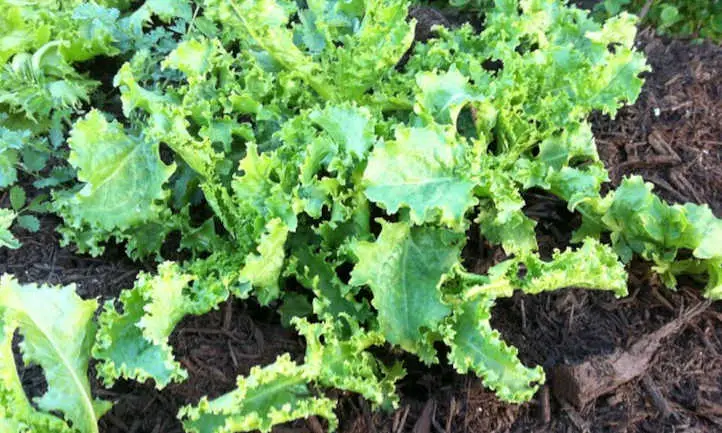
| Common Name(s) | endive, escarole, frisee, curly endive, and endive lettuce |
| Scientific Name | Cichorium endivia |
| Days to Harvest | 90 days |
| Light | Full sunlight to partial shade |
| Water | Regular watering |
| Soil | Well draining, moisture-retentive, fertile |
| Fertilizer | General balanced fertilizer |
| Pests | Slugs, snails, aphids, flea beetles |
| Diseases | Bacterial fungal rot, bottom rot, downy mildew |
All About The Endive Plant

You may be surprised to learn that endive comes from the daisy family, Asteraceae. If you ever let your endive plants flower you will understand why. The botanical name for endive is Cichorium endivia with two key varieties, escarole endive, C. endivia var. latifolia, and curly endive, C. endivia var crispum. Belgian endive and radicchio are also part of the Cichorium genus but are not from the endivia species despite often being referred to as ‘endive’. It’s easy to see how this can be confusing. Common names include endive, escarole, frisee, curly endive, and endive lettuce.
Endive is believed to originate in Europe and Asia where it remains a popular vegetable today. Curly or frisee-type plants have narrow, deeply cut curly leaves that grow from a large central rosette of light green leaves to dark green at the edges. The darker the leaf the more bitter the flavor. Red varieties of frisee are also available to grow and make a nice contrast in a salad bowl.
Escarole endive has broad smooth leaves and is a hardier cool-season plant. The flavor is less bitter than other endives especially the lighter-colored inner leaves which can be used in salads in the same way as frisee. The slightly tougher outer leaves are perfect for cooking like leafy greens or chopped and used in soups.
If plants are left to go to seed, they will produce a tall branching flower stalk with pale blue daisy-like flowers. Endive seeds are small and light brown, enveloped in a little paper capsule, easy to collect, and will readily self-seed.
Although the leaves of all endive plants are the main edible part, all endives have a tap root of various sizes containing a milky liquid that can be slightly toxic when fresh. Roots are often dried and ground to make a chicory alternative to coffee. The best varieties to use for the coffee substitute are from the C. intybus species and are called Magdeburg or Brunswick.
Many growers blanch endive plants to produce lighter-colored, less bitter leaves. This is done by placing a pot over the top of the plant or securing the leafy heads together with a rubber band or string to block the light from the center of the plant. Do this two to three weeks before harvest and use blanched plants as soon as possible as they can go to seed quickly after the blanching process.
Types Of Endive
As mentioned above there are many plants in the genus Cichorium that are commonly referred to as endive. In general, the name ‘endive’ is given to the bitter-flavored, leafy parts of most plants in the chicory family even if they are not from the species endivia.
In addition to the curly and escarole endives described earlier there is another type of endive called Belgian Endive or ‘Witloof’ which belongs to the species C. intybus var. foliosum. Belgian endive is small, 4-6 inches long, and has cylindrical shaped heads called ‘chicons’ with creamy, yellow leaves that are slightly bitter. The heads are produced after harvesting the plants in the previous season, digging up the roots and forcing them to resprout in the same way mushrooms and rhubarb are grown in darkness to develop a firm closed head with crisp leaves and a delicate flavor.
Belgian endive can be baked, braised on the barbeque, and can even be used as a healthy alternative to crackers and chips with dips.
A red version of Belgian endive known as radicchio makes an excellent addition to salads. It can also be forced to produce crisp, lighter-colored leaves.
Varieties of curly and escarole endive to look out for include:
- Jeti: Curly/frisee type with light green upright leaves and easy to blanch
- Pancalieri: An excellent self-blanching frisee type with very curled leaves.
- Avance: Escarole type, fast-growing, cold tolerant with densely filled hearts.
Planting Endive
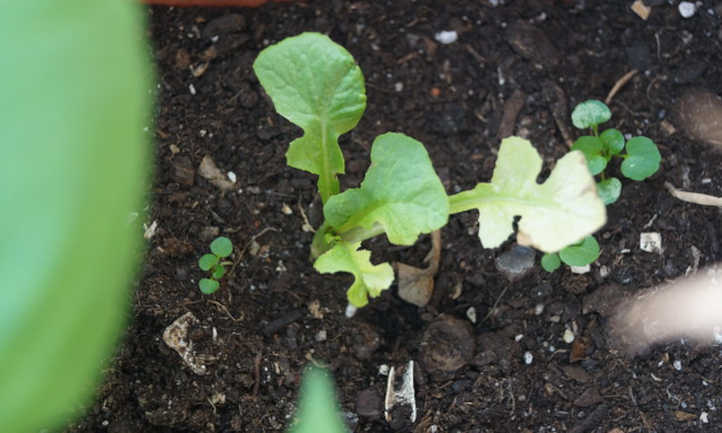
As a cool weather vegetable, endive should be sown during the cooler months. In northern climates sow in early spring for harvesting up to early summer and sow again in mid to late summer to harvest into winter. In warmer climates sow endive in early fall to harvest right through to the following spring.
Start seeds indoors 6-8 weeks before the last frost date and transplant outside after the last frost when air temperatures are stable. Fluctuations in temperature up or down can cause plants to bolt.
Sow seeds directly in mid to late spring in rows 18 inches apart, thinning to 7-8 inches apart. Don’t let the thinnings go to waste! These young leaves are perfect for salads. Grow in full sun to part shade in well-drained, consistently moist soil.
Curly and escarole endive are perfect for growing in large containers and work well as cut and come again type of salad leaf. We stock several options in our shop, which will improve your gardening experience. Try Root Pouch Grow Bags, Air Pots, or tiered GreenStalk planters to save space. Keep containers well watered to prevent plants from drying out and running to seed.
Care
Curly and escarole endive are as easy to grow as lettuce! Follow our tips below and you can’t go wrong.
Sun and Temperature
A minimum of 4 hours of direct sunlight is needed to grow endive, so full sun to part shade works best. As a cool-season crop, endive grows best in temperatures around 60ºF (15ºC). Too much fluctuation in temperature up or down will cause plants to bolt so best to sow a bit later in spring when temperatures are more stable. Bolting causes leaves to become bitter and unpalatable. Escarole endive is hardier than curly varieties and is the better option to grow for fall/early winter harvests but will still need some frost protection with a frost blanket. On the other hand, prolonged high temperatures will cause leaves of escarole varieties to become bitter so it’s best to grow curly types in summer. USDA zones to grow endive are 4-9.
Water and Humidity
Growing endive requires consistently moist soil in planting beds to prevent plants from becoming stressed and bolting. Check soil for moisture levels regularly and water as needed. Mornings are best to allow plants to absorb all that lovely moisture before the full heat of the day. Use soaker hoses or a watering can, directing the water to the soil and not the leaves.
Soil
Light, fertile, well-drained soil is best to grow endive. Most soil types are fine except heavy clay which can cause water logging which rots endive roots and leaves. Loose soil is best. Digging in lots of well-rotted manure or add aged compost prior to planting tp help keep moisture in whilst providing nutrients for plants. Endive likes its pH on the slightly acid side preferring a pH 5 to 6.8.
Fertilizing
Endive ill benefits from fertilizer throughout the growing season either by digging in some fish emulsion, blood meal, bone meal, or well-rotted manure a few weeks before planting or using balanced liquid general fertilizer once or twice a month during the growing season.
Pruning
Endive doesn’t require any formal pruning apart from the odd tidy-up to keep plants healthy and of course to harvest. If you grow endive as a cut and come again then harvest often to encourage fresh new growth. Remove any debris around plants as well as damaged or diseased outer leaves to prevent fungus developing in garden soil, and to discourage slugs and snails. Remove entire plants at the soil level after bolting to prevent self-seeding.
Propagation
Sow endive seeds indoors in module trays 6-8 weeks before the last frost date for transplanting outdoors in mid to late spring when daily temperatures are more consistent. Harden them off slowly to acclimatize them before finally planting out into the final growing positions.
Alternatively, sow seeds directly into the ground from mid to late spring when soil temperatures are a minimum 59°F (15°C). Seeds will not germinate when soil temperatures exceed 80°F. Sow thinly ½ inch deep (1cm).
Harvesting and Storing
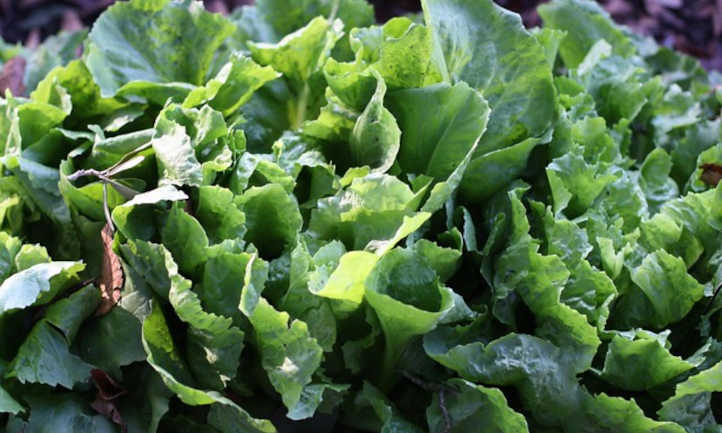
There are a couple of ways to harvest and store your endive crops for optimum use.
Harvesting
Curly/frisee endive is grown mainly as a summer crop and can be harvested as cut and come again, simply by snipping a few leaves as needed, or harvesting as a mature head from late spring onwards usually around 3 months from the sowing date. To harvest an entire head cut the stem at the base of the leaves with a sharp knife. The broader leaves of escarole types can also be harvested in the same way but usually later in the year.
Storing
Endive is best used soon after harvesting – especially blanched plants which deteriorate more quickly. Loose leaves and whole heads will store in the refrigerator for up to a week if wrapped in damp kitchen paper.
Troubleshooting
Endive leaves aren’t very tasty to most common pests although there are a couple of insects to look out for as well as one or two diseases.
Growing Problems
As a temperature-sensitive plant, one of the main growing problems to contend with when growing endive is bolting (plants running to seed). All plants eventually go to seed when the time comes but you want to make sure you can harvest first. To avoid plants bolting, ensure you are sowing and growing your plants at the right time of year for your climate and keep the soil moist at all times.
Pests
Slugs and snails can be a problem when growing endive as they thrive in the moist soil conditions that endive prefers. Handpicking particularly at night and removing hiding spots such as damp wood, logs, and plant debris will help to reduce populations. An organic slug and snail bait may be useful as well.
Aphids (Aphidoidea) enjoy the fresh new leaves produced at the heart of endive plants making it unattractive and difficult to clean. Grow companion plants like marigolds or calendula to help deter aphids and encourage beneficial insects into the garden to feed on them. Alternatively, spray them with an organic insecticidal soap or neem oil. Squishing aphids with fingers or a quick blast of water can also help to reduce numbers.
Flea beetles are shiny black insects that feed on leaf matter leaving behind yellow stippling. They look like tiny, black grasshoppers and leap when you try to catch them. Yellow sticky traps will capture them, but these can also trap beneficial insects. A light mist of neem oil before the sun rises, and outside times when temperatures are 90°F will kill them and keep them away.
Diseases
Endive is a cool season plant that is also the perfect environment for bacterial leaf spot to thrive. This fungal disease can be carried in soil and water and causes brownish water spots on foliage which eventually turn yellow and the leaves rot. Avoid disturbing the soil around plants when the area is wet and avoid watering from overhead whenever possible. Remove infected plants immediately to prevent the bacteria from spreading and rotate crops each year.
If endive plants are sitting in soil that is too wet or after prolonged period of rain the bottom leaves can begin to rot, known as bottom rot. Symptoms include reddish brown spots on the underside of leaves which quickly deteriorate. In very wet conditions remove the most outer leaves so they are not resting on the soil and avoid overhead watering. Remove infected plants and avoid crowded plants by providing adequate spacing. Rotate crops each year.
Downy mildew can also affect endive in cool, wet weather. It appears in stark white patches on leaves, indicating this fungal disease has taken hold. The best treatment is prevention in the form of copper fungicide sprayed as the plant is growing.
Frequently Asked Questions
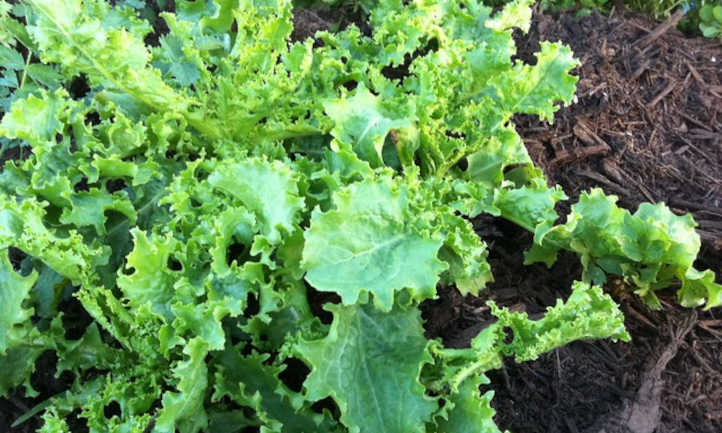
Q: Is endive a lettuce?
A: Endive is often referred to as a type of lettuce and is similar in appearance to lots of lettuce varieties. Both lettuce and endive are from the same family, Asteraceae, but in a different genus; endive is from Cichorium and lettuce, Lactuca sativa.
Q: Is endive difficult to grow?
A: Endive is temperature sensitive and prone to bolting. Apart from this, it is moderately easy to grow.
Q: What does an endive taste like?
A: Endive flavor ranges from mild to strong bitter greens. When cooked the flavor becomes mellow and nutty.
Q: Is endive a superfood?
A: Endive is considered by many to be a superfood. The bitter flavor is beneficial to gut health and the leaves are rich in vitamins and minerals.

